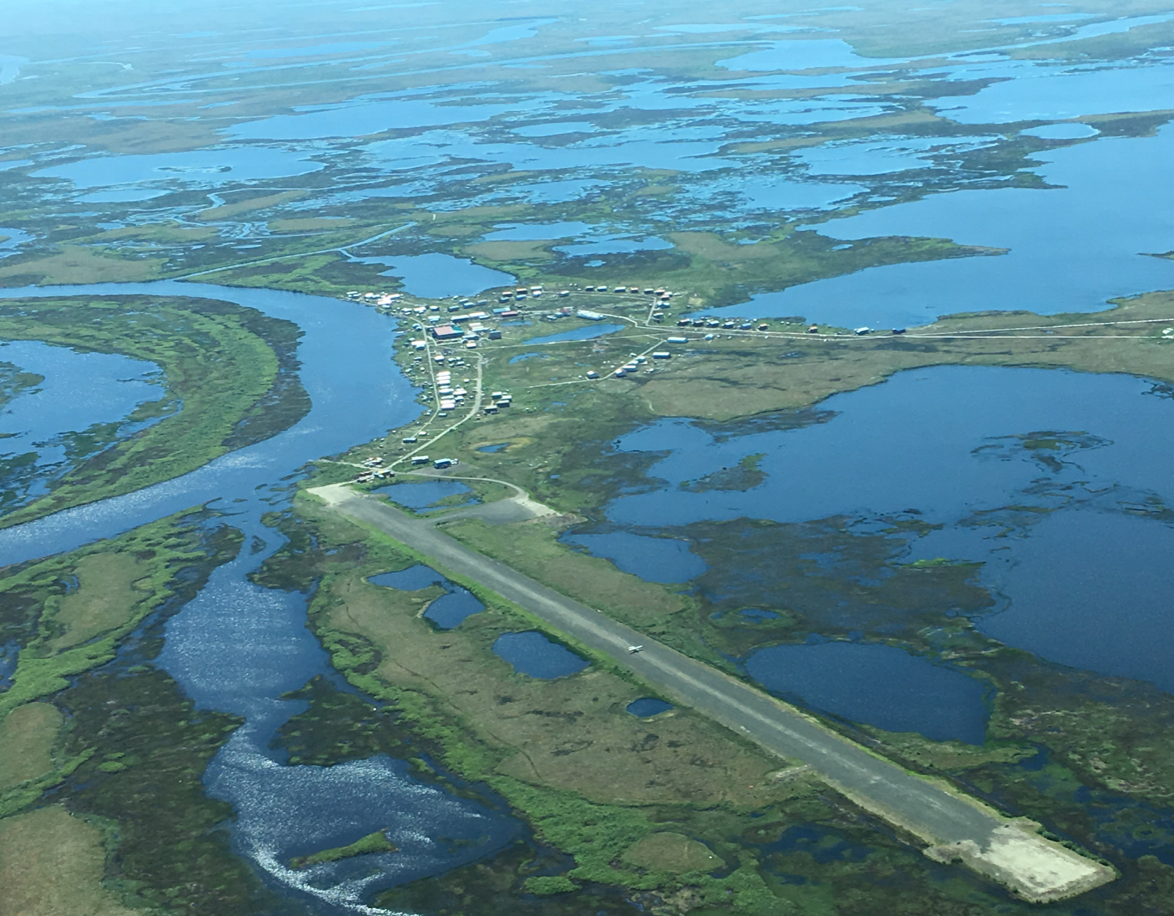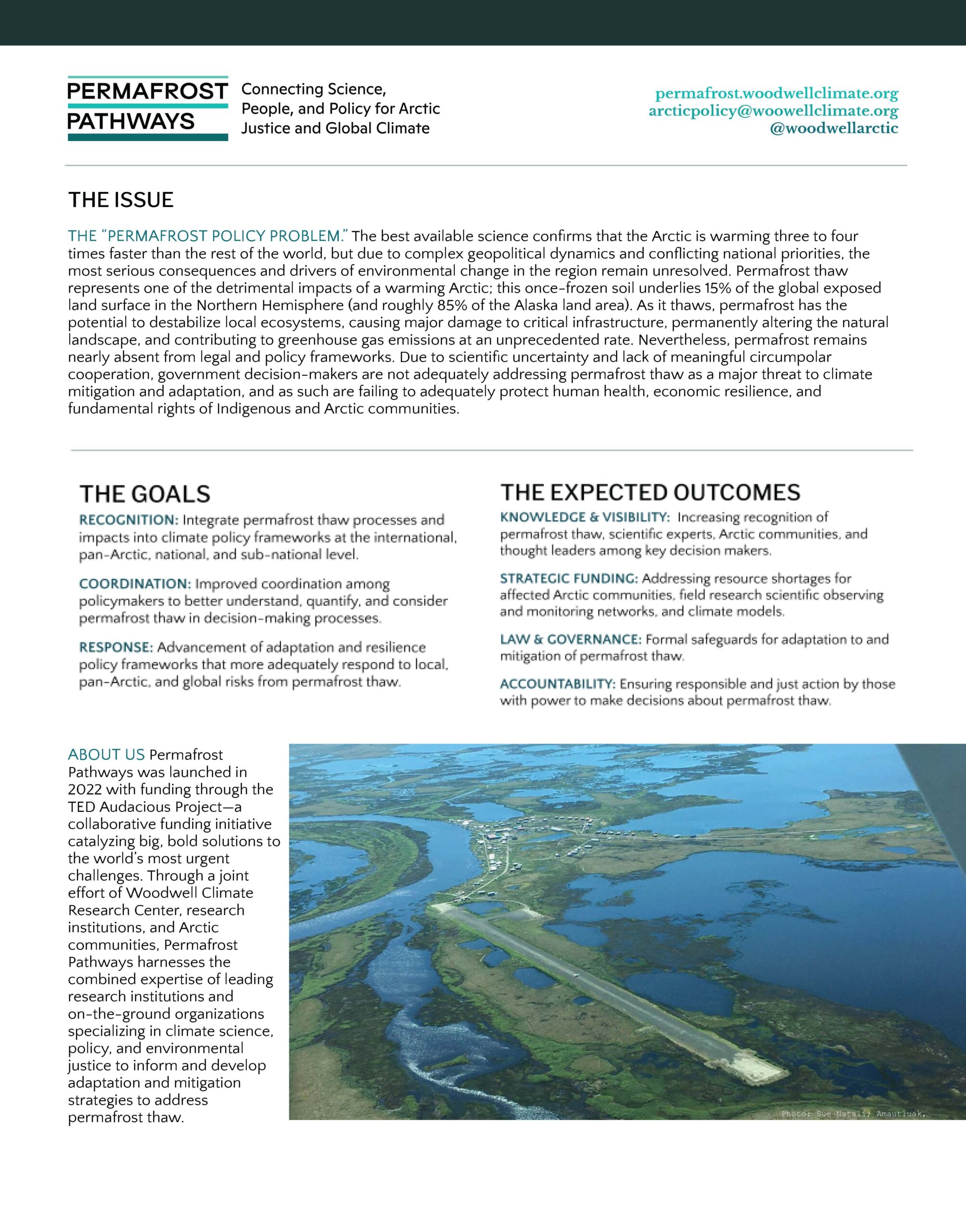Permafrost Pathways policy overview

arcticpolicy@woodwellclimate.org
Overview
The best available science confirms that the Arctic is warming three to four times faster than the rest of the world, but due to complex geopolitical dynamics and conflicting national priorities, the most serious consequences and drivers of environmental change in the region remain unresolved. Permafrost thaw represents one of the detrimental impacts of a warming Arctic; this once-frozen soil underlies 15% of the global exposed land surface in the Northern Hemisphere (and roughly 85% of the Alaska land area). As it thaws, permafrost has the potential to destabilize local ecosystems, causing major damage to critical infrastructure, permanently altering the natural landscape, and contributing to greenhouse gas emissions at an unprecedented rate.
Nevertheless, permafrost remains nearly absent from legal and policy frameworks. Due to scientific uncertainty and lack of meaningful circumpolar cooperation, government decision-makers are not adequately addressing permafrost thaw as a major threat to climate mitigation and adaptation, and as such are failing to adequately protect human health, economic resilience, and fundamental rights of Indigenous and Arctic communities.
Go to top


